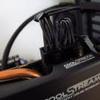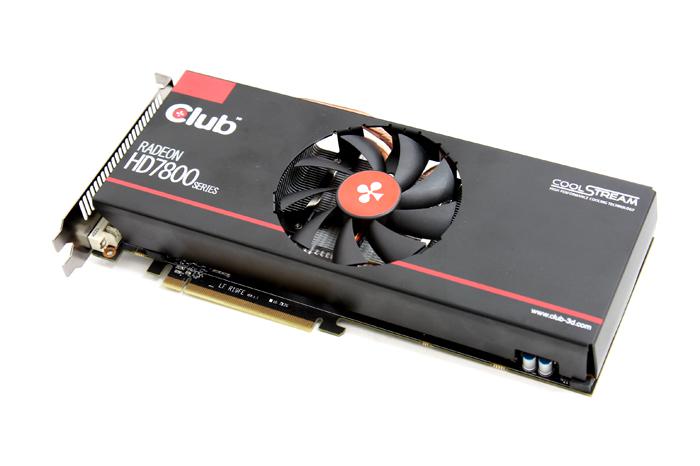Introduction
Club3D Radeon HD 7870 (Tahiti LE) - the Joker card in the Poker series
A couple of months ago there was this rumor that a Radeon HD 7930 would be released, a slightly slower 7950. The dynamics have changed a bit as there are some selected SKUs on the market that use the Tahiti series GPU (R7900) in the R7800 series products. As such today we review the Club3D Radeon HD 7870 Joker, this is the much discussed 7870 card that in fact has a 7900 series GPU, what now is known as the Tahiti LE. For a fair amount of money this series 7800 product offers 7900 series performance. Armed with 2GB of graphics memory it hits a sweet spot gaming performance wise and to date it one of the more popular products in the mainstream segment. Let's check out the Club3D Radeon HD 7870 Joker card.
Now please do understand that the Joker 7870 is not a Radeon HD 7950. It might use the same chip, but you get less shader processors, less memory on a 256-bit memory bus. It's a weeeeird to explain product but look at the chart below and compare it back and forth, it will all fall into place then.
| Radeon HD 6970 | Radeon HD 7850 | Radeon HD 7870 | Club3D HD 7870 joker | Radeon HD 7950 | Radeon HD 7970 | |
|---|---|---|---|---|---|---|
| Shader Units | 1536 | 1024 | 1280 | 1536 | 1792 | 2048 |
| ROPs | 32 | 32 | 32 | 32 | 32 | 32 |
| Graphics Processor | Cayman | Pitcairn | Pitcairn | Tahiti LE | Tahiti Pro | Tahiti XT |
| Transistors | 2640M | 2800M | 2800M | 4310M | 4310M | 4310M |
| Memory Size | 2048 MB | 2048 MB | 2048 MB | 2048 MB | 3072 MB | 3072 MB |
| Memory Bus Width | 256 bit | 256 bit | 256 bit | 256 bit | 384 bit | 384 bit |
| Core Clock | 880 MHz | 860 MHz | 1000 MHz | 975 MHz | 800 MHz | 925 MHz |
| Memory Clock | 1375 MHz | 1200 MHz | 1200 MHz | 1500 MHz | 1250 MHz | 1375 MHz |
| MSRP | $380 | $185 | $245 | $270 | $310 | $390 |
So yeah, what you are gonna see is that in some cases the R7870 Joker will sit at 7950 performance but realistically, it will often be in-between the R7870 and R7950, but for the money it's a mighty good position to be in. The prices mentioned above are MSRP, I just checked locally (Netherlands) and we spotted this card for as low as 205 EUR already (!).
Custom PCB, custom cooling and a faster factory clocked card series as it clocks in at 975 MHz, and that's a boost frequency. So this 7870 which really is a low segment R7980 in terms of tweakability, will not disappoint either as 1150 MHz is a target you can achieve without too much effort. And that brings this card in certain conditions close to the Radeon HD 7950 in terms of performance. We test the product with the hottest games like Crysis 3, BioShock, Tomb Raider, Battlefield 3, Sleeping Dogs, Far Cry 3, Medal of Honor Warfighter, Hitman Absolution and many more.
Now you have seen the word 'Boost' a couple of times already, but what is up with that ? Well as you guys know AMD released the 7970 GHz edition, all of the sudden it came with turbo slash boost functionality. Basically depending on power load the GPU core clock frequency can clock up and down in a dynamic fashion. The function is not new and was introduced by NVIDIA on the series 600 cards, it's the very same principle really. That means that if your graphics card is allowed to use up-to 150 Watt the core frequency will be increased up-to a certain threshold until that 150 Watt margin has been reached, that means much more flexibility and where allowed, a little performance boost.
Now, the 28nm Tahiti GPU that powers this reference Radeon HD 7870 Joker card with its 1536 shader processors, is typically clocked at an 800 MHz reference base clock. On the Boost versions, two things changed, the boost functionality itself and the core is now allowed to boost to 995 MHz. Coming from 925; it's going to be interesting.
But lets head onwards into the review.


